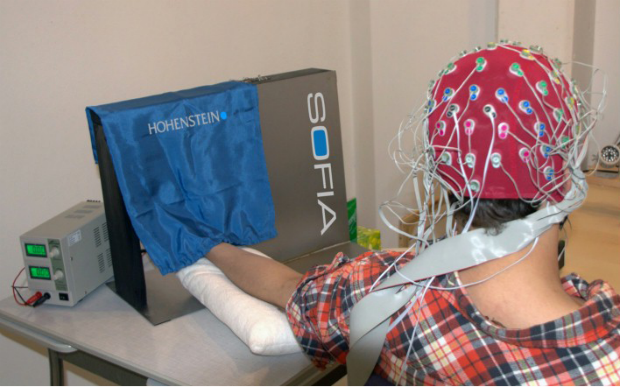
Comfort and protection with PBI NRG LP
A recent Hohenstein Institute study may help to develop or optimise specific clothing, meant to help the concentration of the wearer, for example in CI wear or military clothing, after it confirmed that clothes can affect the person’s focus. The research may also enable researchers working with Prof Dr Dirk Höfer (Hohenstein Institute) and Dr Kai-Markus Müller (Neuromarketing Labs) to measure the potential impact of textiles on concentration directly on the brain. Ideally, textiles should not be consciously perceived while they are worn, the researchers say and clothing design, the quality of materials and the seams of textiles can demand more attention from the brain than one would like during a working day.

5th September 2013
Innovation in Textiles
|
Boennigheim
A recent Hohenstein Institute study may help to develop or optimise specific clothing, meant to help the concentration of the wearer, for example in CI wear or military clothing, after it confirmed that clothes can affect the person’s focus.
The research may also enable researchers working with Prof Dr Dirk Höfer (Hohenstein Institute) and Dr Kai-Markus Müller (Neuromarketing Labs) to measure the potential impact of textiles on concentration directly on the brain.
Ideally, textiles should not be consciously perceived while they are worn, the researchers say and clothing design, the quality of materials and the seams of textiles can demand more attention from the brain than one would like during a working day.
The SOFIA study, which took an EEG brain scan of 24 test subjects while they were wearing ‘business underwear’, has now demonstrated the significant impact of tight clothing on our capacity to think.
Three types of material were put through the friction test and then analysed using the special textile applicator SOFIA, based on recording the brain’s reaction to the tactile sensations experienced by the person during the contact with the material.
The textiles used in the blind study were linen as control, a premium double rib product made of cotton, and a newly developed business undershirt made by 99°F. The materials were moved on the hand and underarm of test persons, with the contact pressure and application speed chosen in accordance to how underwear typically moves on the skin.

The scientists simultaneously recorded the electrical activity of the brain using a 64 channel EEG. Different sounds were played in parallel to the measurements. The brain's reaction to these sounds allowed the determination of how the tight contact with the material distracts the participants in the study.
The initial friction test showed significant differences between 99°F and the premium double rib product.
The SOFIA study confirmed that observation, as the EEG brain scans showed that all test subjects had far lower mental reserves when linen or the double rib product was applied. Applying the 99°F business undershirt, in contrast, the brain's response was significantly stronger.
The 99°F business undershirt distracted the test person less than the cotton premium brand and left more room in the brain for other thinking processes and alertness.
In order to avoid using the questionnaires, typical of such studies with test persons, the researchers used a brain response that has been investigated in a number of well-substantiated studies, proving the ability to generate strictly objective data.
This, they say allowed the recording of the brain’s unprejudiced response to the textile and acoustic stimuli, measured after a few hundred milliseconds.
The results of the study are currently being prepared for a scientific publication in an international renowned journal.

Business intelligence for the fibre, textiles and apparel industries: technologies, innovations, markets, investments, trade policy, sourcing, strategy...
Find out more